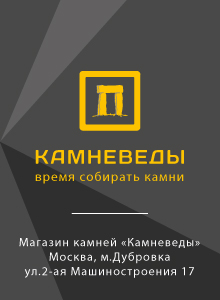Комиссия IMA по новым минералам и названиям минералов: нормы и рекомендации по номенклатуре минералов, 1998 ТРЕБОВАНИЯ ДЛЯ УТВЕРЖДЕНИЯ НОВЫХ МИНЕРАЛОВ
REQUIREMENTS FOR THE APPROVAL OF NEW MINERALSBefore a new mineral and its name can be accepted into the literature, they must be approved by the CNMMN. To obtain this approval, the senior investigator should submit a proposal to the chairman of the CNMMN (see Appendix I), either directly, or through a national new-minerals committee, if appropriate; at present, national committees perform this function in Russia and China.
It is important that a new-mineral proposal be submitted for approval before publication. Such a submission should contain as much information as possible so that the CNMMN can adequately judge the validity of the proposal. Ideally, a new-mineral proposal should contain the following information:
Proposed name and reason for its selection.
Description of the occurrence (geographic and geological occurrences, paragenesis, and a list of associated minerals, particularly those in apparent equilibrium with the new mineral).
Chemical composition and method of analysis.
Chemical formula, empirical and simplified.
Crystallography: crystal system, crystal class, space group, point group, unit-cell parameters, unit-cell volume, number of formula units per unit cell, and X-ray powder-diffraction data.
Crystal structure: general description, site populations, structural formula, reliability factor.
General appearance and physical properties: grain or crystal size, morphology, type of aggregate, color, streak, luster, transparency, hardness, tenacity, cleavage, parting, fracture, density, both measured and calculated (Mandarino 1981a).
Optical properties
a) Non-opaque minerals: optical character (isotropic or anisotropic; uniaxial or biaxial), optical sign, indices of refraction, 2V, dispersion, orientation, pleochroism and absorption. The compatibility index using the Gladstone – Dale relationship (Gladstone & Dale 1864) should also be calculated (Mandarino 1981b, Bloss et al. 1983).
b) Opaque minerals: color in reflected plane-polarized light, internal reflections, reflectance, bireflectance, pleochroism and anisotropy. The reflectance must be measured relative to a reflectance standard approved by the IMA Commission on Ore Microscopy (IMA–COM), ideally from 400 to 700 nm at intervals of 20 nm. The minimum requirement is for reflectance data at the wavelengths 470, 546, 589 and 650 nm. Where data are supplied for measurements in oil, the oil used should conform to the German standard DIN 58.884; this and other recommendations of the IMA–COM are contained in Criddle & Stanley (1993).
Other data: Thermal behavior, infrared spectrum, response to chemical tests, etc.
Type material: The type material should be designated according to the criteria published by Dunn & Mandarino (1987) and deposited as permanent reference material in at least one major museum or a nationally recognized mineral collection (Dunn 1988).
Relationship to other species.
Relevant references.
Any other data that will clarify difficult parts of the description.
It is recognized that it may not always be possible to obtain all the above data; in such cases, the author should give reasons for the omissions. Of particular importance is the calculation of H2O content where it has not been determined analytically. If H2O is reported by difference, the method of calculation should be clearly stated and, if possible, evidence for the presence of H2O should be provided. Also, ample justification should be given for the allocation of hydrogen to H2O, OH or H3O.
Because of great differences in the amount and type of information that can be obtained from the study of a particular mineral specimen, it is not practical to specify the irreducible minimum of information required for a mineral to be approved; each proposal must be considered on its own merits.
A general outline of the procedures involved in establishing a new mineral species is given by Dunn (1977). To assist potential authors of new-mineral proposals, a check-list has been drawn up (Mandarino 1987) and should be submitted as part of the proposal. Copies of an official check-list can be obtained from the chairman of the CNMMN or from one of the national representatives (Appendix I). Guidelines on some aspects of new-mineral proposals are given
below.
To assist scientists who do not have all the technical facilities to obtain some important data for the complete definition of a new mineral, the CNMMN (via its chairman or secretary) may ask some of its members, or specialists of some subcommittees, to collaborate with these scientists in order to improve their proposal. It happens in some cases that non-mineralogical specialists such as crystallographers or chemists publish a crystal-structure description of a new mineral that has not been officially approved by the CNMMN. Such descriptions should not include a name for the mineral.
If the entire mineral specimen has been consumed during the course of the investigation, and consequently nothing of the specimen remains to be deposited in an appropriate collection, approval for the new mineral will not be given; this is because some material should always remain for possible later re-examination.
источник
|
info@kristallov.net Правила копирования и цитирования материалов с сайта Кристаллов.Net |
| Карта сайта |
|
© Кристаллов.net | Kristallov.net Copyright 2010-2017 Систематика и классификация минералов, горных пород, метеоритов, окаменелостей |

